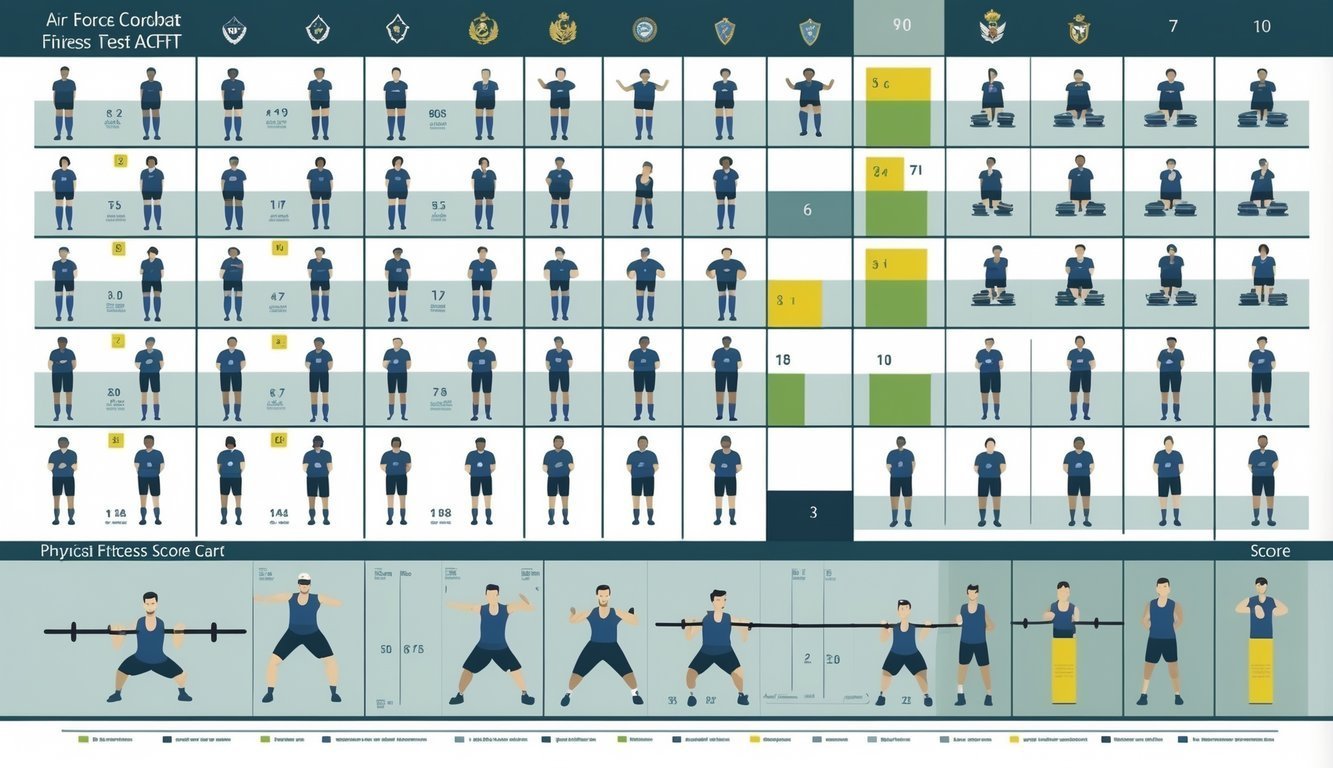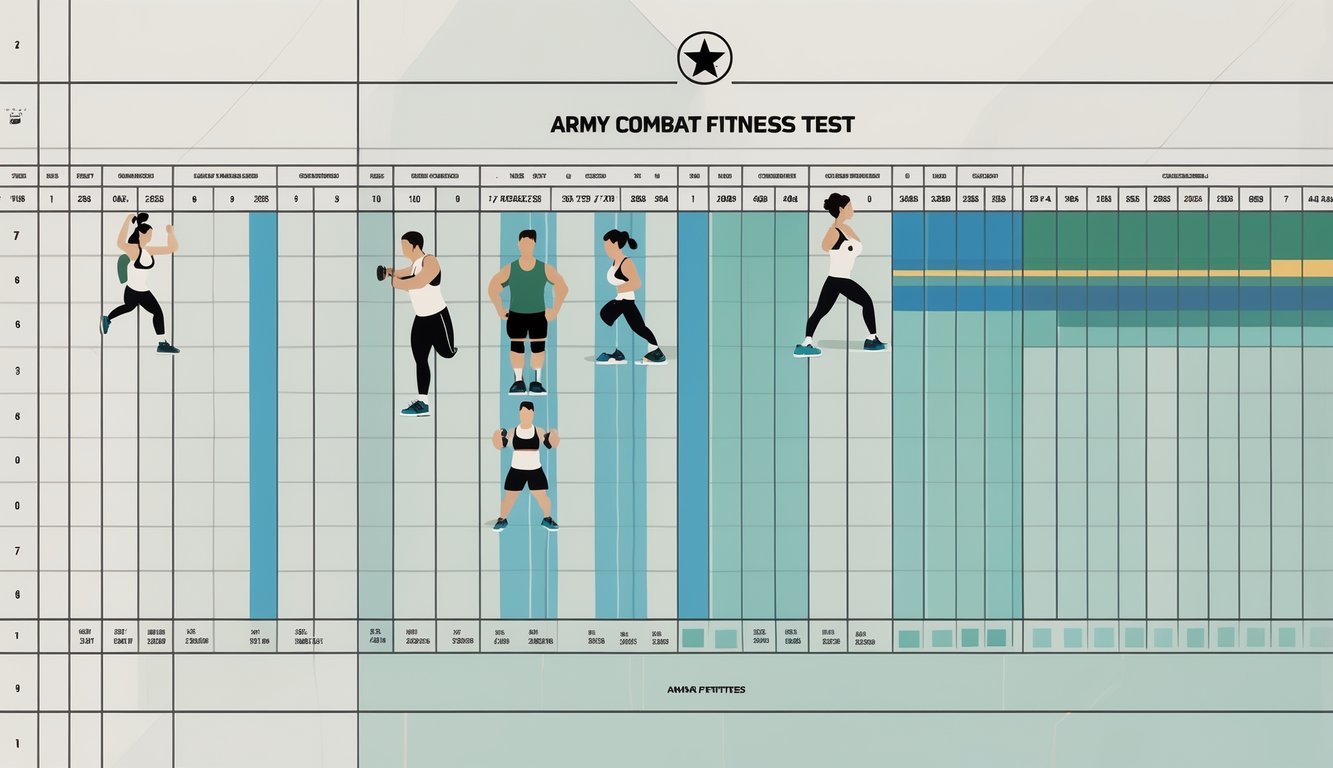PsychNewsDaily Publishers
100 Summit Drive
Burlington, MA, 01803
Telephone: (320) 349-2484
PsychNewsDaily Publishers
100 Summit Drive
Burlington, MA, 01803
Telephone: (320) 349-2484
The Army Combat Fitness Test includes six events to assess strength, endurance, and agility, with scoring adjusted for age and gender to ensure fairness.

The ACFT score chart lays out exactly how your performance in each event turns into points. It helps you see what you need to lift, run, or do to meet the Army’s fitness standards. When you know your score goals, it’s way easier to track progress and get ready for the test.
Each event on the ACFT has its own scoring range based on your age and sex. The chart adjusts for you. Whether you just want to pass or you’re shooting for a top score, the chart spells out what counts as passing and what’s considered excellent.
When you use the chart, you know exactly where to focus your training. It’s a practical tool that keeps your fitness goals right in front of you.

The ACFT score chart breaks down how the Army grades each part of the test. It shows your scores by age and gender, explains how points work, and helps you spot where you need to pass or improve. Knowing this can really shape your training and help you hit the Army’s physical standards.
The ACFT has six events: three-rep max deadlift, standing power throw, hand-release push-ups, sprint-drag-carry, leg tuck or plank, and a two-mile run. Each one tests a different part of your fitness—think strength, endurance, agility.
You earn points for how well you do in each event. Those points add up to your total score. The max score is 600 points, with 100 points per event. This setup checks your overall fitness, not just one thing.
Your ACFT score depends on what you do in each event. For example, the weight you lift in the deadlift or your two-mile run time gives you a certain number of points. Each event gives you between 0 and 100 points.
The chart tells you what you need to do for each point level. Lifting more weight or running faster gets you more points. Every event matters the same for your total.
The scoring chart changes for different age groups and gender. Passing scores shift depending on your category. The Army built this in to keep things fair.
Age groups usually go in five-year blocks—17-21, 22-26, and so on. What you need to pass or excel changes in each group. Men and women have different standards too. Always check your own category to know your targets.
To pass the ACFT, you have to meet the minimum in every event and get at least 360 points total. That usually means 60 points per event. If you fail any event, you’ll need to retake that one.
Your ACFT scorecard lays out your results, making it obvious which events you passed or need to work on. If you don’t pass, you’ll get another shot after more training. Use your scores to zero in on weak spots for next time.

The ACFT checks six events that look at your strength, endurance, speed, and coordination. To train well, you need to focus on specific muscles and movements and avoid injuries. The right equipment and strategies for each event really make a difference.
The ACFT has six different challenges:
Each event works different muscles and energy systems. You’ll need to train a mix of skills.
Using good technique during the ACFT boosts your score and keeps you safe.
For the deadlift, keep your back straight and lift with your legs. Grip and foot placement matter for control.
In the power throw, focus on explosive movement and coordination. Hold the medicine ball firmly.
During the HRPU, lower your chest all the way and lift your hands to reset. This builds your chest and shoulder strength.
The SDC needs fast switches between sprinting, dragging, and carrying. Balance and agility help a lot.
Wear good shoes for the running and sprinting events. Make sure kettlebells and medicine balls are in good shape.
If you have physical limitations, the Army offers alternate events like the plank instead of leg tucks.
Leg tucks check your core and upper body by making you pull your knees to your elbows while hanging. If you can’t do them, the plank works as a substitute.
Some people may get walk tests or lighter loads depending on fitness or injury.
These options help you show your fitness without unnecessary risk.
Work on strength training for the deadlift and push-ups. Use weights and bodyweight moves.
Add explosive drills like medicine ball throws and sprints to get faster and more powerful.
Do core work—planks, leg raises, stability moves—to help with plank holds and leg tucks.
Build your aerobic capacity with regular runs and try to increase your pace for the two-mile.
Don’t forget to recover—sleep, hydrate, and eat well.
Keep track of your progress by practicing all six events often and writing down your workouts.
Don’t overtrain. Stretch, do some yoga, and work on balance.
This kind of plan boosts your readiness and mental toughness for the ACFT.

You’ll find out how your ACFT score is calculated, what the current standards are, and where to get the latest charts. This info helps you know what to aim for and how to prep.
You get a score for each of the six events, from 0 to 100 points each. Your total score is just the sum of all six.
You have to hit the minimums for your category. Your overall score can affect promotions.
Standards change by your job and rank. Most soldiers need at least 360 points in total.
Every event has a minimum you need to hit. If you score below that, you don’t pass.
The Army’s official website posts the newest ACFT charts. You can also check places like Military.com.
Your unit might hand out printed or digital copies for quick reference.
Yes, the Army puts out a PDF with the current standards. You can get it from official sites or through your chain of command.
Having the PDF makes it easy to track your progress and know what scores you need.
The ACFT has six events and tests more strength and endurance skills. The old test only had three: push-ups, sit-ups, and a two-mile run.
The ACFT focuses more on combat readiness, with weights and functional moves.
Absolutely! You can find online calculators where you just plug in your event results.
These tools quickly estimate your total ACFT score based on your rank and category.
I mean, why not try one out and see how you might stack up before the real thing?